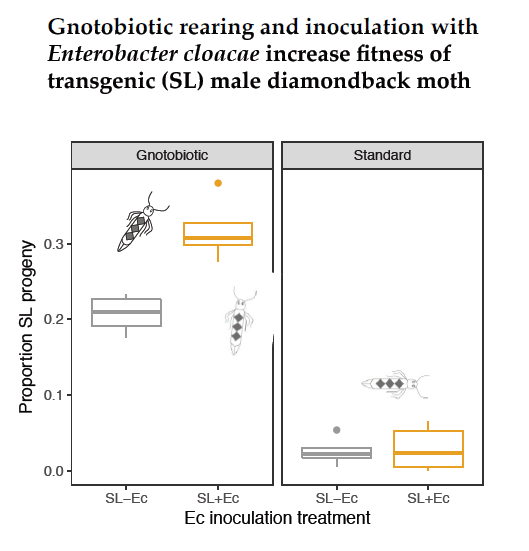Mass insect rearing can have a range of applications, for example in biological control of insects. Since the performance of released biological control agents determines efficacy, the competitive fitness of insects post release is a key variable. Here, we tested whether inoculation with a gut symbiont, Enterobacter cloacae, and gnotobiotic rearing of larvae could improve insect growth and male competitive fitness of a transgenic diamondback moth, which has shown variation in fitness when reared in different insectaries. All larvae were readily infected with the focal symbiont. Under gnotobiotic rearing pupal weights were reduced and there was a marginal reduction in larval survival. However, gnotobiotic rearing substantially improved the fitness of transgenic males. In addition, in gnotobiotic conditions, inoculation with the gut symbiont increased pupal weights and male fitness, increasing the proportion of transgenic progeny from 20 to 30% relative to symbiont-free insects. Gnotobiotic conditions may improve the fitness of transgenic males by excluding microbial contaminants, while symbiont inoculation could further improve fitness by providing additional protection against infections, or by normalizing insect physiology. The simple innovation of incorporating antibiotic into diet, and inoculating insects with symbiotic bacteria that are resistant to that antibiotic, could provide a readily transferable tool for other insect rearing systems.

